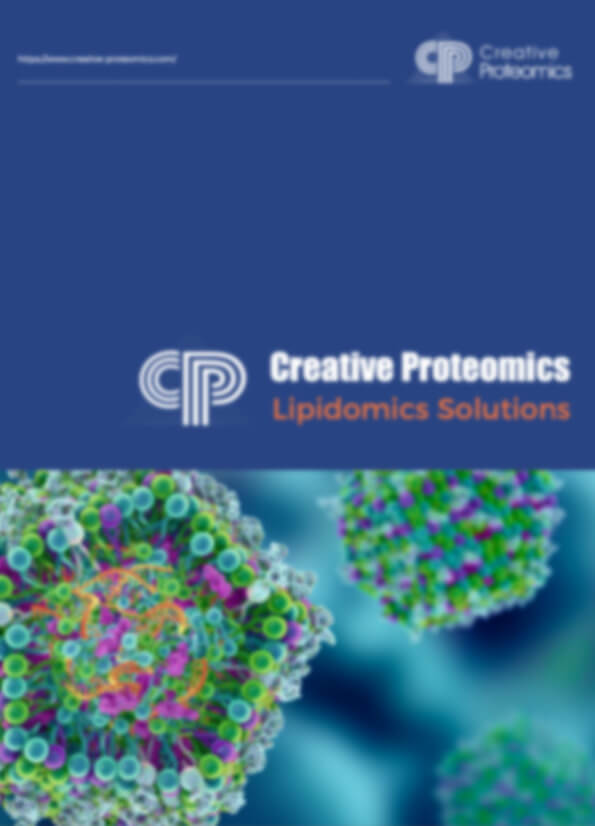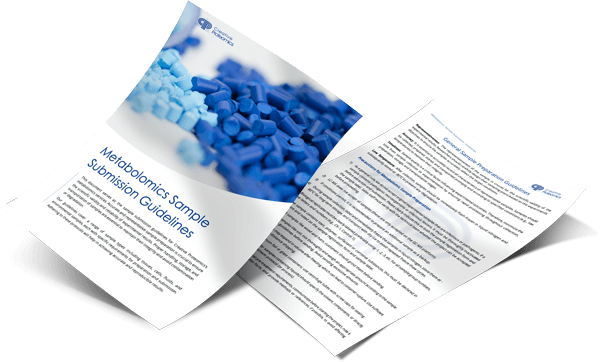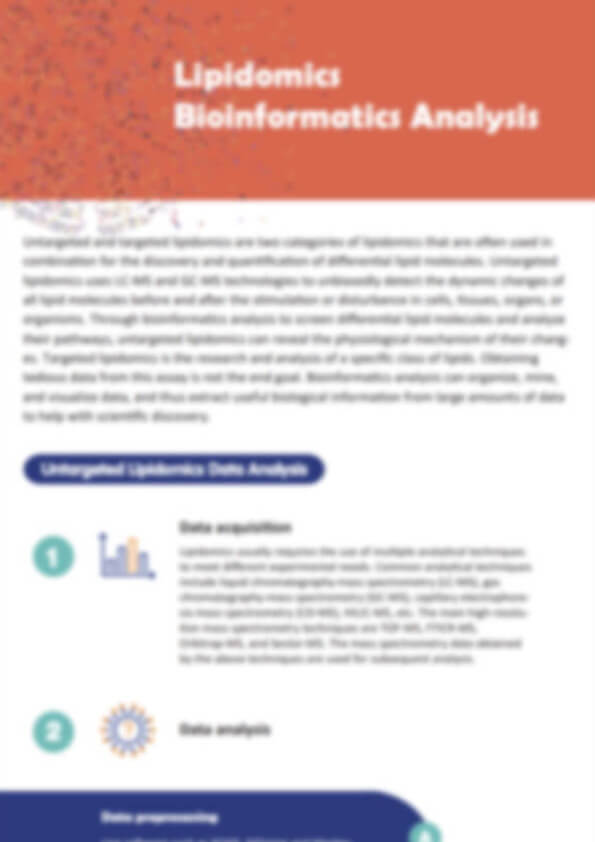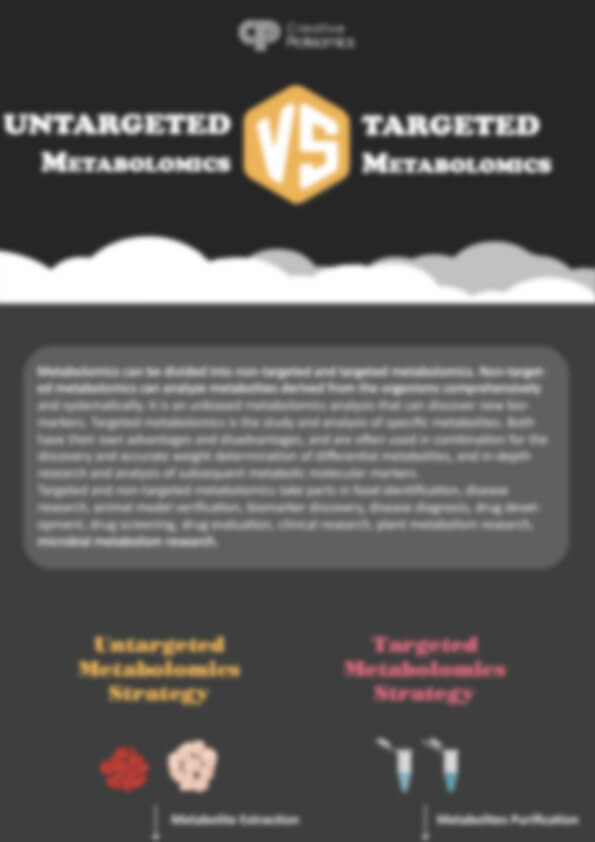Leukotrienes Analysis Service
Creative Proteomics specializes in targeted leukotrienes analysis services powered by UHPLC-MS/MS technology, offering absolute quantification of key leukotrienes (e.g., LTB₄, LTC₄, LTE₄) and their metabolites across plasma, tissues, BALF, urine, and cell samples. By integrating isotope-labeled internal standards, matrix-specific extraction protocols, and MRM-based detection, we deliver ultra-sensitive, reproducible lipid mediator data. Our service helps researchers decode inflammatory signaling, monitor lipid metabolic flux, and visualize pathway interactions with confidence and clarity.
Submit Your Request Now
×- What We Provide
- Advantage
- Workflow
- Technology Platforms
- Sample Requirements
- FAQ
- Publication
What are Leukotrienes?
Leukotrienes are potent lipid mediators synthesized from arachidonic acid through the 5-lipoxygenase (5-LOX) pathway. As members of the eicosanoid family, leukotrienes are involved in various physiological and pathophysiological processes such as inflammation, immune regulation, vascular permeability, and cellular signaling. Key subtypes include LTB₄, LTC₄, LTD₄, and LTE₄, each exerting specific biological functions by binding to G-protein-coupled receptors (GPCRs). Understanding their biosynthesis and metabolism is critical in elucidating lipid signaling networks and disease mechanisms at the cellular level.
Leukotrienes Analysis Service Offered by Creative Proteomics
- Quantitative Analysis of Major Leukotrienes: Absolute quantification of key leukotrienes including LTB₄, LTC₄, LTD₄, LTE₄, and LTF₄ using stable isotope-labeled internal standards to ensure accuracy and reproducibility across sample batches.
- Profiling of Leukotriene Biosynthetic Intermediates: Detection and quantification of precursor and intermediate metabolites such as 5-HETE, 6-trans-LTB₄, and 5-oxo-ETE to support comprehensive pathway elucidation.
- Extended Leukotriene Metabolite Panels: Targeted measurement of omega-oxidation and enzymatic degradation products such as 20-OH-LTB₄ and 20-COOH-LTB₄ to evaluate downstream metabolic processes.
- Multi-Matrix Sample Compatibility: Analysis of leukotrienes across a variety of sample types, including plasma, serum, bronchoalveolar lavage fluid (BALF), tissue homogenates, urine, and cell lysates, with matrix-specific extraction protocols.
- Comparative and Differential Lipidomics Analysis: Comparative analysis across different experimental groups or treatment conditions, with optional fold-change and statistical significance calculations.
- Custom Pathway Analysis and Visualization: Integration of leukotriene data into metabolic pathway diagrams and interactive visualizations for systems biology and network modeling applications.
List of Detected Leukotrienes and Related Metabolites
| Analyte | Abbreviation | Metabolic Pathway |
|---|---|---|
| Leukotriene B4 | LTB₄ | 5-LOX |
| Leukotriene C4 | LTC₄ | 5-LOX |
| Leukotriene D4 | LTD₄ | LTC₄ metabolism |
| Leukotriene E4 | LTE₄ | LTD₄ metabolism |
| Leukotriene F4 | LTF₄ | Secondary metabolism |
| 5-Hydroxyeicosatetraenoic acid | 5-HETE | Precursor via 5-LOX |
| 6-trans-LTB₄ | 6-tLTB₄ | LTB₄ isomerization |
| 20-OH-LTB₄ | 20-OH-LTB₄ | Omega oxidation of LTB₄ |
| 20-COOH-LTB₄ | 20-COOH-LTB₄ | LTB₄ terminal oxidation |
| 5-oxo-ETE | 5-oxo-ETE | 5-HETE oxidation |
Advantages of Leukotrienes Assay
- Quantification Accuracy: Achieves a lower limit of quantification (LLOQ) as low as 5 pg/mL for most leukotrienes.
- Ultra-Sensitive Detection: Employs multiple reaction monitoring (MRM) modes, enhancing detection sensitivity by 20–50x compared to conventional methods.
- High-Throughput Capability: Capable of analyzing over 100 samples/day with robust batch processing and internal QC.
- Comprehensive Metabolite Coverage: Simultaneous quantification of 15+ leukotrienes and metabolites in a single run.
- Batch-to-Batch Consistency: CV% maintained below 10% across inter- and intra-assay replicates.
- Validated Recovery Rates: Exceeds 85% recovery for leukotrienes from plasma and tissue homogenates.
Workflow for Leukotrienes Analysis Service
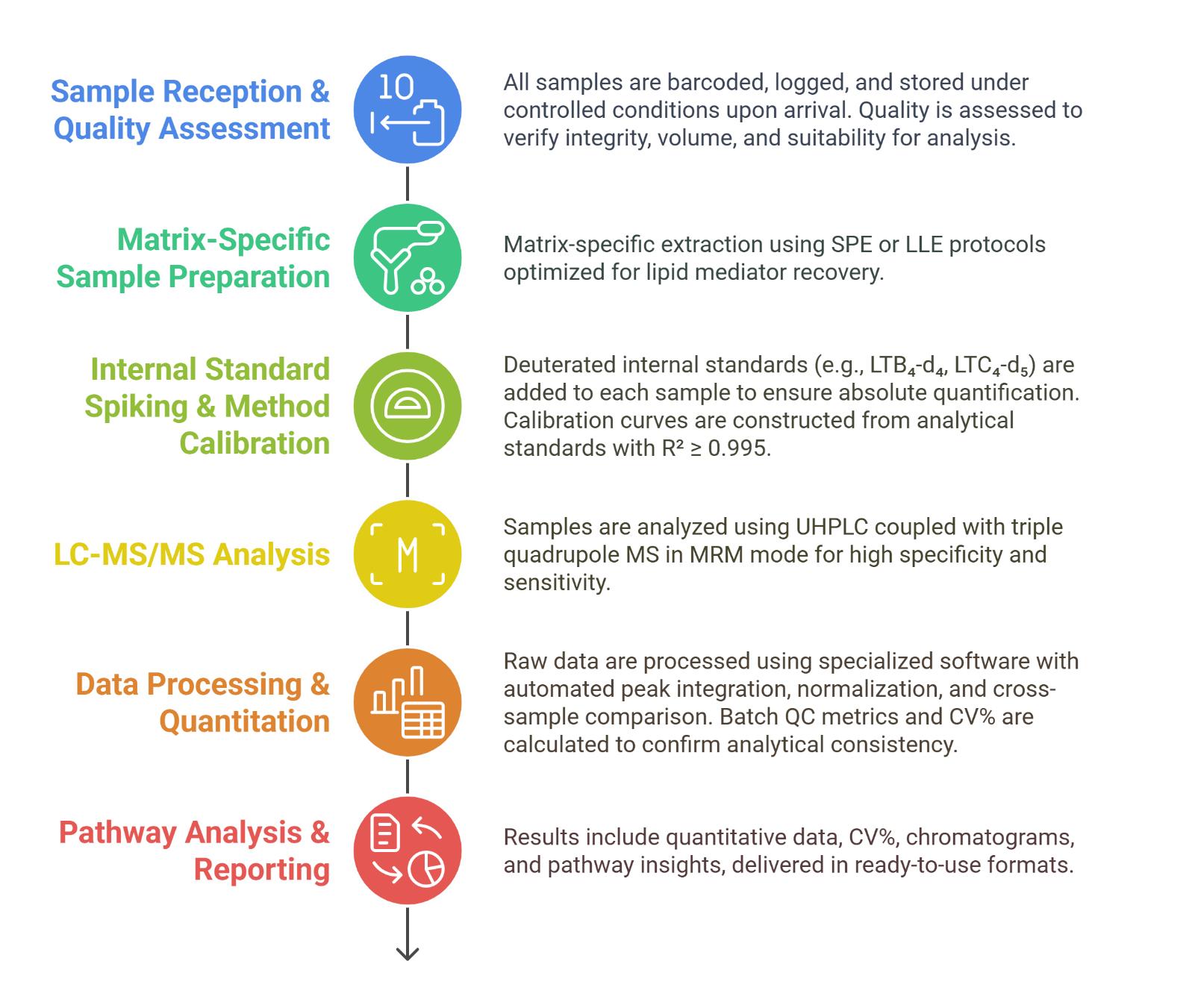
Technology Platform for Leukotrienes Analysis Service
- Agilent 1290 Infinity II UHPLC for high-resolution separation of leukotrienes and related metabolites.
- SCIEX QTRAP® 6500+ Triple Quadrupole MS for targeted, ultra-sensitive quantification using MRM mode.
- Electrospray Ionization (ESI), negative mode optimized for ionizing acidic lipid mediators.
- C18 reversed-phase columns to achieve efficient chromatographic separation.

Agilent 1260 Infinity II HPLC (Figure from Agilent)
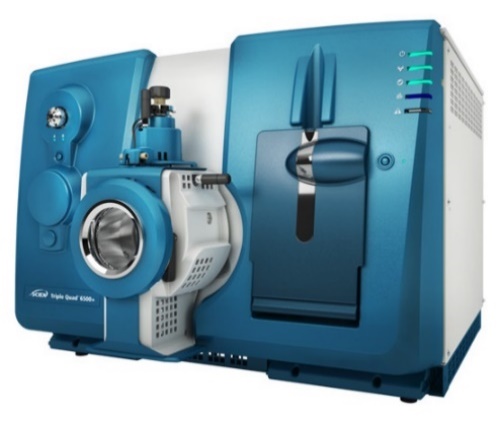
SCIEX Triple Quad™ 6500+ (Figure from Sciex)
Sample Requirements for Leukotrienes Analysis Service
| Sample Type | Required Volume/Amount |
|---|---|
| Plasma / Serum | ≥ 100 μL |
| Tissue (e.g., liver, brain) | ≥ 100 mg (fresh or frozen) |
| Cell Pellet | ≥ 1 × 10⁷ cells |
| Culture Medium / Supernatant | ≥ 500 μL |
| Bronchoalveolar Lavage Fluid (BALF) / Urine | ≥ 200/500 μL |
| Dried Blood Spot (DBS) | ≥ 3 punches (6 mm diameter) |
Applications of Leukotrienes Assay Service
Inflammatory Pathway Dissection
Analyze leukotriene involvement in acute and chronic inflammatory responses, enabling molecular-level understanding of immune signaling.
Immune Cell Function Profiling
Quantify leukotriene dynamics in studies of neutrophil chemotaxis, macrophage activation, and cytokine release regulation.
Enzyme Activity Monitoring
Evaluate 5-LOX and related enzymatic pathway fluxes to characterize leukotriene biosynthesis under experimental conditions.
Environmental Exposure Assessment
Assess how pollutants, xenobiotics, or diet influence leukotriene metabolism and oxidative stress responses.
Lipid Mediator Network Mapping
Analyze leukotriene crosstalk with other lipid mediators (e.g., prostaglandins, HETEs) within LOX and CYP450 pathways.
Preclinical Model Validation
Track leukotriene levels across animal or cellular models to validate inflammatory phenotypes and pathway responses.
Demo

LC-ESI-MS/MS chromatograms of cysteinyl leukotrienes (Syslová, Kamila, et al. , 2011)
FAQ of Leukotrienes Analysis Service
How do you handle differences in leukotriene recovery rates between sample types (e.g., plasma vs. tissue)?
We optimize extraction protocols for each matrix. For example, plasma samples undergo SPE with C18 cartridges (recovery >92% for LTB4), while tissue homogenates use LLE with MTBE/MeOH to minimize phospholipid interference. Matrix-specific calibration curves ensure accuracy.
What bioinformatics support is included for pathway analysis?
We provide:
- KEGG pathway maps with quantified LT levels overlaid
- Custom correlation matrices (e.g., LT vs. cytokine/prostaglandin levels)
- Raw data exports in mzML/mzXML format for third-party tools like MetaboAnalyst.
How do you validate method accuracy for low-abundance LTs like LTE4?
Three-tier validation:
- Spike-recovery tests: 80-120% recovery across 0.1-100 pg/mL (n=6 replicates)
- Stability checks: ≤5% degradation after 3 freeze-thaw cycles
- Cross-lab verification: 95% concordance with NIST-traceable reference materials.
Are there options to integrate LT data with other lipid classes?
Yes. Our multi-lipid profiling add-on combines LT quantification with:
- Oxylipins (e.g., PGE2, resolvins)
- Fatty acid oxidation markers (8-iso-PGF2α)
- Sphingolipids (ceramides, S1P) All analyzed on the same Sciex 6500+ platform to reduce batch effects.
Can I provide samples with unknown LT stabilizers (e.g., proprietary buffers)?
Submit a 50 µL aliquot of the buffer for compatibility testing. We screen for:
- Ion suppression via post-column infusion (<20% signal loss acceptable)
- Chemical stability (LT degradation<15% over 24h at 4°C) A pre-analysis feasibility report is generated.
What if my samples contain interfering substances (e.g., hemolyzed blood)?
We apply:
- Dilution correction: For hemolysis (Hb >0.2 g/dL), samples are diluted 1:2 with PBS
- Blank subtraction: Solvent-only runs identify column carryover (<0.01% threshold)
- MRM ratio checks: Confirm transitions (e.g., LTB4 335→195/115 ratio ±15%).
Do you support longitudinal study designs with batch-to-batch normalization?
Yes. For multi-batch projects (>10 samples), we:
- Include pooled QC samples in each run
- Apply LOWESS normalization to correct retention time shifts
- Report inter-batch CVs for all analytes.
Can the service accommodate time-course experiments (e.g., LT flux after stimulation)?
Our Dynamic Profiling Package includes:
- Time-zero baseline correction
- Kinetic modeling (e.g., LT synthesis rates via Michaelis-Menten parameters)
- Heatmaps of LT/metabolite trajectories over 24h
Learn about other Q&A.
Leukotrienes Analysis Service Case Study
Publications
Here are some publications in Lipidomics research from our clients:

- Glucosylceramide is essential for Heartland and Dabie bandavirus glycoprotein-induced membrane fusion. 2023. https://doi.org/10.1371/journal.ppat.1011232
- Laboratory evaluation of larvicidal and oviposition deterrent properties of edible plant oils for potential management of Aedes aegypti (Diptera: Culicidae) in drinking water containers. 2019. https://doi.org/10.1093/jme/tjz021
- Annexin A2 modulates phospholipid membrane composition upstream of Arp2 to control angiogenic sprout initiation. 2023. https://doi.org/10.1096/fj.202201088R
- Multi‐omics identify xanthine as a pro‐survival metabolite for nematodes with mitochondrial dysfunction. 2019. https://doi.org/10.15252/embj.201899558
- Lipid Membrane Engineering for Biotechnology (Doctoral dissertation, Aston University). 2023. https://doi.org/10.48780/publications.aston.ac.uk.00046663
Reference
- Syslová, Kamila, et al. "Determination of cysteinyl leukotrienes in exhaled breath condensate: Method combining immunoseparation with LC-ESI-MS/MS." Journal of Chromatography B 879.23 (2011): 2220-2228. https://doi.org/10.1016/j.jchromb.2011.06.004
